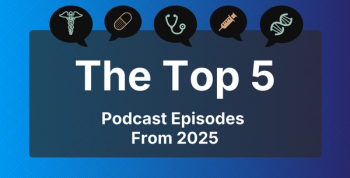
Pain Screening Benefits Care for Pediatric Patients With SCD
Pain screening in young patients with sickle cell disease (SCD) has demonstrated benefits for the administration of integrative health and medicine modalities for pain management.
Utilizing the Pediatric Pain Screening Tool (PPST) is a comprehensive and feasible method for directing the course of pain-related care in pediatric patients with
As children with SCD grow older, they endure a multitude of pain-related challenges that include increasing severity, duration, and frequency of pain. Data estimates that 23% of children and adolescents with SCD experience chronic pain events, and this figure rises to 65% in adulthood. Chronic pain in SCD can contribute to a wide range of consequences, such as higher rates of depression, inpatient visits, functional impairments, and more compared with patients with SCD who do not experience chronic pain.
Integrative health and medicine (IHM) modalities have been shown to be effective in the management of pain for individuals with SCD. IHM modalities include such approaches as physical rehabilitation; surgery; medication; chiropractic care; music, art, and massage therapy; and acupuncture. As data have repeatedly supported the use of IHM modalities in these patients, researchers have recognized the importance of adequate triage and screening services to optimize delivery of these interventions.
The authors of the present study point to the lack of research dedicated to implementing screening protocols for young patients with SCD enduring chronic pain. To address this gap, they conducted a study to evaluate the feasibility of routine screening for pain, identify the clinical presentations of pain, and assess the resources and preferences related to IHM modalities in the clinical care of pediatric patients with SCD.
Patients with SCD who were being treated at the University Hospitals Rainbow Babies & Children’s Hospital (UHRBC) SCD clinic, Clevelnad, Ohio, between March 2022 and May 2023 were included. They were approached for screening during routine clinical visits. Patients were categorized as either asymptomatic (0 days of pain in the previous month) or experiencing episodic (1-14 days of pain in the previous month), persistent (≥15 days per month for up to 6 months) or chronic pain (≥15 days per month for 6 months or more).
The Pediatric Pain Screening Tool (PPST), a 9-item questionnaire, was also utilized to assess risks for disability or chronic pain in younger patients experiencing pain (score range 0-9). Results produce psychosocial and physical subscales to classify youth as either low risk (total PPST < 3), medium risk (total PPST ≥ 3; psychosocial score < 2), or high risk (total PPST ≥ 3; psychosocial ≥ 2).
Other validated assessment methods included the Pain Catastrophizing Scale-Child (PCS-C), a 13-item questionnaire concerned with pain rumination, helplessness, and magnification, and the PROMIS Pediatric Pain Interference Short Form 4a, a 4-item questionnaire concerned with the impact of pain on daily life over the last week, scored with T-scores).
A total of 104 patients were eligible for inclusion. Of this group, 32.7% (n = 34) were experiencing chronic or persistent pain and 46.2% (n = 48) were classified as being at medium or high risk for chronic disability and symptoms. The most common reported comorbidities included vitamin D deficiency (88.5%; n = 92), documented history of acute chest syndrome (69.2%; n = 72), and headache (41.3%; n = 43). Other notable comorbidities were anxiety (16.3%; n = 17) and history of COVID-19 (15.4%; n = 16).
The most common disease-modifying therapies the patients received were hydroxyurea (62.5%; n = 65), voxelotor (17.3%; n = 18), and blood transfusions (11.5%; n = 12). Additionally, the most frequently prescribed pain medications were acetaminophen (80.8%; n = 84), oxycodone (65.4%; n = 68), and ibuprofen (59.6% n = 62).
The patients who completed the PROMIS Pediatric Pain Interference Short Form 4a had an average T-score of 53.2 (50 = normal), and those who completed the PCS-C recorded an average score of 24.3 (classified as having moderate catastrophic thoughts about their pain).
Fifty-four patients completed their IHM surveys. This group expressed the most interest in music, art, and massage therapy (55.6%, 51.9%, and 38.9%, respectively). Furthermore, these patients displayed a preference for in-person compared with virtual services.
As the authors conclude, they detail 2 notable trends they witnessed between patients’ PPST risk category: heighten catastrophizing of pain (P = .012) and heightened interference of pain (P = .019).
“Pain screening processes, such as those implemented in this study, can facilitate early intervention and care coordination to optimize pain management. Furthermore, screening and intervention have been shown to be effective for connecting patients with care and improving chronic pain outcomes,” they wrote. “Given the varying clinical pain presentations observed in this study, a stepped-care model based on pain screening could be used to triage patients to IHM modalities.”
Reference
Vroom DC, Rodgers-Melnick SN, Brown T, Owusu-Ansah A, Dusek JA. Pain screening in youth with sickle cell disease: a quality improvement study. Pediatr Blood Cancer. Published online February 13, 2024. doi:10.1002/pbc.30912
Newsletter
Stay ahead of policy, cost, and value—subscribe to AJMC for expert insights at the intersection of clinical care and health economics.








































